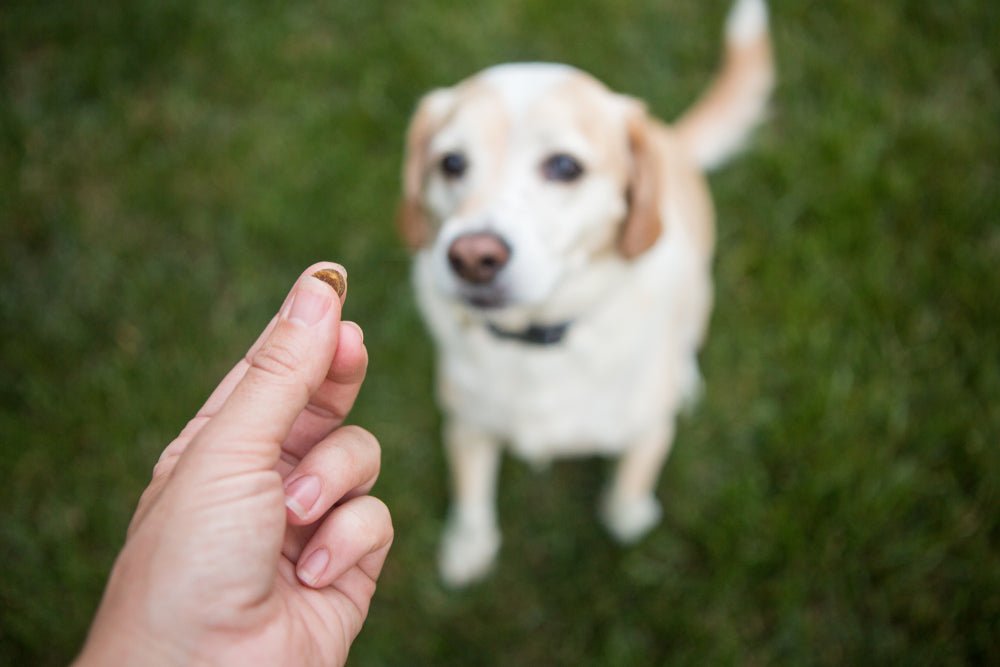![]() Listen to the Podcast
Listen to the Podcast
In the more than 35 years that we've been training dogs professionally, we've seen all breeds, shapes and sizes learn how to come when they are called. Getting a good response to the come command isn't the difficult part when it's taught in a positive fashion.
 Dogs learn to love responding to come because it means play, praise and chase. The real challenge we see is in the ending of the recall. The part where the running and fun ends and the dog has to relinquish control to the handler is usually the tricky part.
Dogs learn to love responding to come because it means play, praise and chase. The real challenge we see is in the ending of the recall. The part where the running and fun ends and the dog has to relinquish control to the handler is usually the tricky part.
The good news is that this is an easy problem to solve with the right tools and information. With a portion of each recall training session dedicated to the ending, your dog will learn to love getting to you and getting a leash clipped on.
Here's how...
First, you'll actually want to break down your recall into parts. Every recall has a beginning, a middle and an ending.
Beginning - can your dog turn off of any distraction?
Middle - can your dog run to you without getting off track?
Ending - can your dog stop at you and will they remain long enough for you to take control? Can you clip on a leash?
There are a lot of great rewards in the beginning and middle components of the recall. Dogs get to run, chase and play, which are innately rewarding things for most dogs. The ending is all about the training and the value built by the trainer. There are few dogs who will find getting the leash attached to be a rewarding part of being called in, so it's up to us to build value into the ending.
For a perfect recall ending, you'll need to teach your dog 2 skills:
Sit During Arousal
First, you'll want to teach your dog to sit when they're in a high state of arousal. Here's a great video we put together to teach this skill. Once they have mastered that, you'll need to convince them that it's worth their while to sit and give you focus despite whatever temptations are out there. This takes time, so don't be in a hurry or gloss over it in your training. Be sure you proof through the sit to strengthen it and cement understanding.
Taking the Collar
A second skill you'll need is the ability to take hold of the collar for control. This is something that may seem like a simple task, but lots of dogs like to play "catch me if you can!" Rather than dealing with that, put some work in ahead of time making sure your dog has a pleasant association with you taking a hold of their collar. Practise repetitions of feeding calm behaviour as you reach in and grip your dog's collar. Practise clipping the leash on and off, rewarding the dog at each step and taking your time so that you can ingrain calm.
After you've practised these skills individually, you can put them all together. When you set out to practise your recall, make sure you mix things up to keep them interesting and reinforcing. The endings of your recall should include the following:
1 - call your dog in, reward and release back to what they were doing
2 - call your dog in, ask them to sit, reward the sit, release to play with you
3 - call your dog in, ask them to sit, reward the sit, proof the sit, release when ready
4 - call your dog in, release to play with you
5 - call your dog in, ask them to sit, reward, clip on the leash, reward, release under control
6 - call your dog in, ask them to sit, reward, clip on the leash, reward, remove the leash, release back to what they were doing.
A variety of endings will go a long way to keeping your dog interested and motivated. Mix up the pattern and add in any training skills you think will be important to your training program.
Remember that the ending will become demotivating for the dog if it always signifies the end of fun. If we only ever call our dogs when we are leaving the park or going in the house, you'll sour your dog to the recall in a hurry. Plan your training sessions so that there are a few times you call your dog, reward them with enthusiasm and their favourite treats and then release them to go back out to play or sniff around the yard.
This is a skill you'll have for life. Keep practising it to keep it fresh and keep your dog responsive and you'll be able to enjoy the freedom of a dog who comes when called.
As always, Happy Training!
|
|
Hi! I'm Shannon and I joined the McCann team in 1999 while training Quincey, my wonderful and spirited Rottweiler, to have good listening skills. I'm the Director of Online Training and Content for McCann Professional Dog Trainers and I enjoy writing about dogs and dog training for the McCann blog. I currently share my life with 2 Tollers (Reggie & Ned) and I love helping people develop the best possible relationship with their 4-legged family members. |


